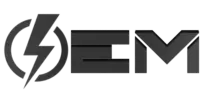The U-channel linear motor is a high-precision, direct-drive electromechanical device that converts electrical input into linear motion, offering efficiency and low maintenance.

U-Channel Linear Motor: An Introduction to its Functionality and Applications
Overview
The U-channel linear motor is an advanced electromechanical device designed to produce linear motion directly from electrical input. This motor is unique due to its U-shaped design, which provides a variety of benefits compared to traditional linear motors. In this article, we will explore the principles behind U-channel linear motors, their advantages, and their potential applications in various industries.
Working Principle of U-Channel Linear Motors
U-channel linear motors consist of a U-shaped primary part, also known as a stator, and a secondary part, known as a forcer or slider. The stator is usually made up of laminated iron cores with copper windings, while the forcer is composed of permanent magnets. When electrical current is supplied to the stator’s windings, it generates a magnetic field that interacts with the permanent magnets on the forcer, resulting in a linear force that moves the forcer along the stator.
One of the key features of U-channel linear motors is their ability to produce direct linear motion without the need for any mechanical transmission components, such as gears or pulleys. This leads to higher efficiency, faster response times, and reduced mechanical wear, making these motors ideal for a variety of high-performance applications.
Advantages of U-Channel Linear Motors
There are several advantages to using U-channel linear motors over traditional linear motors and other types of motion systems. Some of these benefits include:
- High precision: U-channel linear motors can achieve sub-micron positioning accuracy due to their direct-drive design and lack of mechanical transmission components. This makes them perfect for applications requiring precise and repeatable motion.
- High force density: The U-shaped design of the stator allows for a higher concentration of magnetic flux, resulting in a stronger force output for a given motor size. This enables the motor to produce higher forces while maintaining a compact form factor.
- Low maintenance: Since U-channel linear motors do not rely on mechanical components like gears or pulleys, they require less maintenance and have a longer service life compared to other motion systems.
- Flexible design: The modular nature of the stator allows for easy customization and scalability to meet the specific requirements of different applications.
Applications of U-Channel Linear Motors
U-channel linear motors are utilized in a variety of industries due to their unique benefits. Some common applications include:
- Semiconductor manufacturing: High-precision positioning and fast response times are crucial in semiconductor manufacturing processes, such as photolithography and wafer inspection. U-channel linear motors provide the accuracy and speed needed for these applications.
- Robotics: U-channel linear motors can be found in robotic systems, where their compact size, high force density, and low maintenance requirements are particularly advantageous.
- Medical devices: Precision, reliability, and low maintenance are essential characteristics in medical devices, such as surgical robots, diagnostic equipment, and drug delivery systems. U-channel linear motors meet these requirements, making them well-suited for these applications.
- Material handling: In industries such as packaging, automation, and assembly, U-channel linear motors provide precise and rapid positioning, which can enhance efficiency and reduce production times.
- Aerospace and defense: The demanding requirements of aerospace and defense applications, such as high precision and fast response times, make U-channel linear motors an ideal choice for tasks like satellite positioning and guidance systems.
Conclusion
The U-channel linear motor is a versatile and powerful electromechanical device capable of providing direct linear motion with high precision and force density. Its unique U-shaped design and lack of mechanical transmission components make it a reliable, low-maintenance, and flexible solution for various applications across multiple industries. As technology continues to advance, it is likely that U-channel linear motors will play an increasingly important role in the development of innovative and efficient motion systems.
References
- J. F. Gieras, “Linear synchronous motors: transportation and automation systems,” CRC Press, 2012.
- K. Atzori, “Linear motor-driven systems: design, integration, and evaluation,” IEEE Transactions on Industrial Electronics, vol. 54, no. 6, pp. 3068-3075, Dec. 2007.
- T. Kenjo, “Permanent-magnet and brushless DC motors,” Clarendon Press, 1985.
- R. Krishnan, “Switched reluctance motor drives: modeling, simulation, analysis, design, and applications,” CRC Press, 2001.

